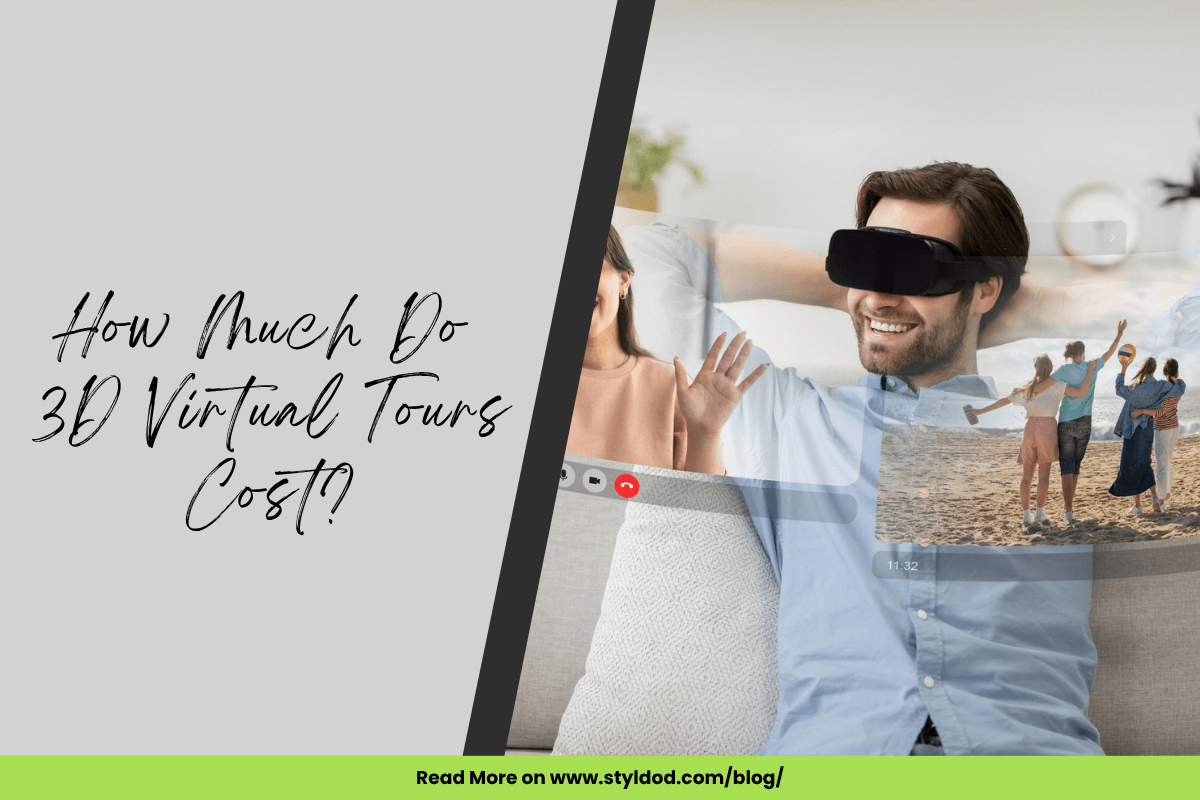
How much do virtual tours really cost? That’s a question many people ask when they first think about adding this feature to their property or business. Over the last few years, 3D virtual tours have become one of the most attractive ways to showcase spaces, whether it’s a home, a commercial building, or even a hotel. They give your clients or potential customers a realistic, walk-through experience without having to be there in person. If you’re a real estate agent or a business owner, you’ve probably considered investing in one. In this blog, we’ll break down the costs for you, explain what factors influence the price, and help you figure out what works best for your budget and goals.
The price of a 3D virtual tour depends a lot on the property itself. For a smaller home, you might pay anywhere between $100 and $500. For bigger or more complex spaces, the cost can cross $500 and even go into several thousand dollars. The price changes based on the size of the property, how detailed you want the tour to be, the type of technology or equipment used (such as Matterport), and the expertise of the service provider you choose. We'll break this down in more detail later, so you have a better idea of what to expect and budget for.
If you're on the fence about spending money on a virtual tour, here’s why it can be a smart move:
If you're planning to get a 3D virtual tour made for your property, it helps to understand what actually affects the final cost. Here’s a closer look at some of the main factors that can influence how much you’ll end up paying:
The bigger your property, the more it’s likely to cost. A small studio apartment will obviously take less time and effort to scan compared to a large multi-storey villa or a commercial space. Also, if your layout is complex with lots of rooms, staircases, or outdoor areas, that adds more work for the team capturing and stitching the tour. So both size and layout play an important role in pricing.
The quality you choose has a huge impact on the price. A basic tour with standard resolution will cost less, but a high-resolution tour with crisp visuals, smooth navigation, and detailed textures naturally costs more. Higher quality also means longer processing time and possibly better equipment, which adds to the investment but creates a far better viewing experience for your audience.
If you want more than just a simple walk-through, be prepared to pay extra. Features like interactive floor plans, embedded videos, hotspots with extra information, voiceovers, or branded elements can make your tour stand out but will also increase the price. These add-ons give your viewers a richer experience but take extra time and expertise to design and integrate.
Where your property is located also plays a role in the cost. If your property is in a major city, there are usually more service providers, which may give you competitive pricing. On the other hand, properties in remote or less accessible areas might incur higher costs because of travel time and logistical challenges. Service providers often include these factors in their pricing, so location can make a noticeable difference.
If you're planning to get a 3D virtual tour done for your property or listing, it helps to understand how the pricing works. Different providers follow different pricing models, and knowing what each one includes can help you choose what suits your needs and budget. Here's a quick look at the most common pricing models in the 3D virtual tour space:
This is the simplest and most transparent pricing method. You pay a fixed cost per photo or panorama, no matter how big or small the property is. It’s a great option if you want full control over your budget from the start.
At Styldod, we follow this model and charge just $1.5 per photo, making it one of the most affordable options out there. Whether you need a small apartment or a spacious villa covered, you only pay for the number of photos you choose. It's predictable, budget-friendly, and perfect if you're managing multiple listings or working with limited marketing costs.
Some providers charge based on the total size of the property. The more square footage, the higher the price. This model works well for large commercial spaces or high-end properties where every corner needs to be captured.
However, it can get expensive if you're working with bigger spaces. It’s always good to check what’s included in the price, like editing or hosting, so you’re not caught off guard later.
This pricing method depends on how much time the photographer or scanning professional spends on your site. It might sound reasonable, but time-based models can be unpredictable. If a shoot takes longer than expected, the final cost could stretch well beyond your estimate.
Hourly pricing works better for custom shoots or when the property has unique challenges. For standard real estate needs, flat pricing usually makes things easier.
Some companies offer bundled packages that include a set number of virtual tours, edits, add-ons like floor plans, or even photo enhancements. These deals are often discounted and work well for real estate agents who need multiple listings done each month.
While packages can save you money in the long run, it's important to check what’s included. Some might only cover the basics, while others give you the full deal with interactive features and premium-quality renders.
Virtual tours may sound fancy, but they’re more doable than you think. Whether you choose a simple photo-based option or go all out with interactive add-ons, there’s something for every budget. The right pricing model depends on your space, your needs, and how much you want to offer your viewers. If you want something affordable without cutting corners, Styldod gives you a clear starting point. Just pick what fits best and let your space do the talking.